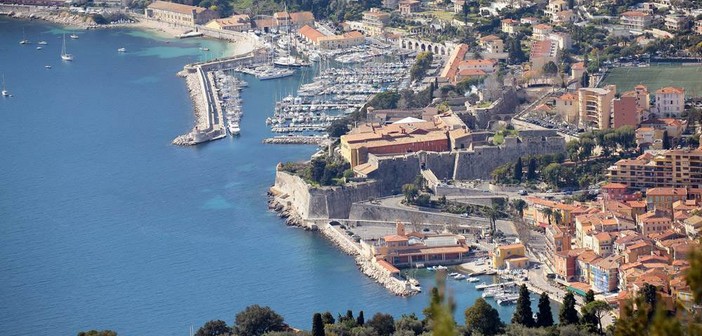You cannot imagine the historical richness of this city stretched out at the end of its harbor. Tourists only stop here in transit during a cruise, preferring the artificial glitz of the Principality of Monaco, yet there is so much to discover right at the foot of their ship.
We will start our tour of Villefranche from the SNCF train station. The train arrived here in 1868, barely eight years after the annexation, which developed tourism in the County of Nice, later creating the French Riviera.
Villefranche-sur-Mer has a rich history; consider this. After the train station, on returning to the town and its citadel, we find the Palace of the Navy, an 18th-century building that was the residence of the governor of the Citadel.
The towns then extended beyond the walls and fortifications. The Robert Gate, named after the Count of Provence and King of Naples Robert I, dates from the 14th century. We will make a detour via the Rue Obscure and especially the Rue du Poilu, which honors the soldiers who went to the front during World War I, leading to the station. We must not forget the Church of Saint Michael, which houses a reclining Christ made of olive wood, the work of a prisoner, sadly anonymous.
We are back on the Fishermen’s Quay. Here, the Sardinian, French, Russian, and American navies anchored in the harbor, and the restaurants still have memories of the sailors and crews. Emperor Charles V passed these quays in 1538, on his way to meet Francis I, who was in Antibes.
The Chapel of Saint Peter from the 16th century became a net store and a fishing court before being rehabilitated by Jean Cocteau in 1957. The maritime station was built on a 14th-century bastion. We have arrived at the citadel. It was built in the 16th century by the will of the Duke of Savoy, Emmanuel Philibert. Further on, the Darse with its arsenal and 170-meter long ropewalk dates from the 18th century.
After the end of the sailing navy, the ropewalk housed the Alpine hunters. A humorous commentator might have said, “It’s always a story of ropes; after the naval ones, here are those of the mountaineers!” The vaults, where the galleys were stored, were topped until 1942 by the Dubois barracks. In 1957, the architect Eugène Beaudouin created a garden in place of the building, sadly abandoned. The arsenal had and still has its dry dock.
The pier built in 1728 still bears the arms of Savoy. With the galleys gone, the premises first housed coal for the Russian fleet from 1855 to 1885, and then Professor Alexis Korotneff ran a zoological station here, which today depends on the University of Paris. Of the Lazaret victim to developers, only a modest small house, known as the Paganini Tower, remains.
Indeed, it was here that the remains of the famous violinist who died in Nice in 1840 were kept. The more adventurous can continue along a rocky path, known as the customs trail, which will lead them to the gates of Nice.
Thierry Jan


